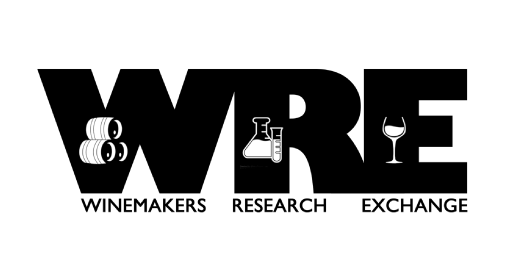Comparison of Common Merlot Clones Planted in Virginia (2014)
Rachel Stinson Vrooman
Stinson Vineyards
Purpose
Compare the sensory attributes of common Merlot clones. Methods: Identically sourced Merlot consisting of three different clones (181, 343, VCR) was harvested and separated (0.77tons/bin). Each t-bin was inoculated with 14g/hL D254, treated identically through fermentation and racked to neutral 2009 Taransaud (181), neutral 2008 Seguin Moreau (343), and neutral 2007 Francois Frere (VCR). Results: Spectroscopy indicated no color difference between clones (Figure 1), However, there was a preference for the 181 Merlot clone based on taste (Figure 2). Discussion: There are clear consistencies in the comparison data providing valuable insight into future planting as well as blending and barrel programs. Similar experimentation involving varietals other than merlot may be worthwhile Conclusion: Based on sensory analysis, Merlot clone 181 was preferred by a majority of tasters.
Presented January 28, 2015 at Trump Winery
Keywords: Merlot, VCR, 181, 343, D254, Hue, Intensity, color
Introduction
The decision of which clone to plant of a signal varietal, is important and can be very difficult. Which clone will survive and thrive in a specific area or climate is largely only based on anecdotal data. The data presented here are attempting to standardize this information and present it in a way that will be valuable to vineyards in this same area. This study compares the sensory attributes of three common Merlot clones: 181, 343, and VCR.
Methods
Identically sourced Merlot consisting of three different clones (181, 343, VCR) was harvested, destemmed, and separated into bins (0.77tons/bin). Each t-bin was inoculated with 14g/hL D254, treated with Endozyme ICS10 Rouge (0.165mL/hL) and Fermaid O (20g/hL) after lag phase and ⅓ Brix depletion. Wines were treated identically and racked to neutral 2009 Taransaud (181), neutral 2008 Seguin Moreau (343), and neutral 2007 Francois Frere (VCR).
Results
Spectroscopy indicated small color differences between clones (Figure 1). Clones 181 and VCR had a difference in intensity (See Color Ref) of about 12%, clone 343 and VCR had a difference in intensity of about 10%, however, 181 and 343 were practically identical. Additionally, Hue was identical or similar between all clones.
Tasting data (appendix A) showed a sensory preference for clone 181 (Figure 2). Comparison data taken at the same time show the particular attributes this wine had as compared to the other clonal varieties.
Figure 1

Figure 2

Discussion
The preference results obtained during this tasting make sense considering 181’s long history in Bordeaux’s Pomerol region containing red clay soils, similar to those in the Monticello region. Though, it is important to note that 181 was not preferred by all respondents, just a majority.
Having several clones of the same variety may provide a greater depth of character to finished wines. Additionally, having several clones in the vineyard may ensure success in the event that one clone is more susceptible to a particular weather, fungus, virus, etc.
The results from the tasting run the risk of being skewed by each taster’s sensitivity to oak, as each clone was taken from a different neutral oak barrel. However, there are clear consistencies in the comparison data providing valuable insight into future planting as well as blending and barrel programs.
Annual continuation of this experiment may provide data regarding the preference of a particular clone relative to the conditions of the growing season. Additionally, similar experimentation involving varietals other than merlot may be worthwhile.
Conclusion
Based on sensory analysis, Merlot clone 181 was preferred over 343 and VCR by a majority of tasters; however there were minimal differences in color. Tasters provided valuable comparison information during the tasting.
References
Appendix A – Descriptive Sensory Analysis Data
181
Aroma: Herbaceous, tight, funky nose, dirty, earth, red fruit (2), soft plumb, slight green, tight, floral, fresh, earthy, musty, more fruit, jammy, strawberry, dark cherry (2), tea leaves, medicinal, clean, muted, ironed clothes, neutral wine barrel, slightly herbal, flowery blossom, wood shavings, leesy, darker, more jam notes, no aroma, caramel
Taste: Oily, creamy but linear, soft round tannins, light, slightly bitter, nice acid balance, spicy, round, astringent, good fruit, balanced (3), riper, better mid-palette, biggest structure, black cherry, cough syrup, high tannin, sweet fruit, light, short, lesser, medium, full body, better tannins (2), slightly lively, more fruit, lighter cherry, red fruit, nice mouth feel/finish, soft, balanced but thinner, more tannins
VCR
Aroma: ripe berry, leather, red fruit (2), candied, dark fruit (3), slight burnt rubber, earth, coffee, muted, metallic, slightly green, oak, vegetal, stemmy, musty, not as aromatic or firm, strawberry, reductive, slight VA? menthol, cherry, sulfur (2), oak, dusty, dirty, black pepper, clove, cinnamon, dark cherry, pencil shavings, plastic, less concentrated, earth, mushroom, black current
Taste: Tart, smoother, fruit forward, low pH, better acid, more fruit showing through, clean acid, hot, spicy, balanced, acidic finish, bitterness, tannins more prominent, short finish, thinner, dusty, black pepper (2), red fruit, strong tannin, soft, plush, sticky tannins, tannic, structured, round mouth feel (2), tart apples, clean, good finish, crisp finish, dusty, yeasty, leather, black cherry, fruity, soft, diluted, rich, medium body, low acid, oak, balance
343
Aroma: Bright, clean fruit, bright red, slightly reduced nose, burnt match, plumb fruit, crushed raspberry, muted, herbaceous (3), dried fruit, alcohol, musty, cherry (3), pickled, dark fruit, earthy, lactic, slightly herbal, clean, dusty, dirt, asparagus, cooked vegetables in vinegar, pepper, wood shavings, black cherry, green, not very open
Taste: Fruitful, very astringent, roundness fruity, soft, little acid/tannin, balanced tannin, tannic, blueberry, nice tannins, most astringent, good fruit, subdued, restrained, cherry, white pepper, sweet spice, light body, good tannins, softer & fruitier, red berries, fresh red fruit, lighter, good roundness, under ripe, shorter, astringent, diluted, high acid, no fruit, earthy, no oak, thin up front, least favorite
